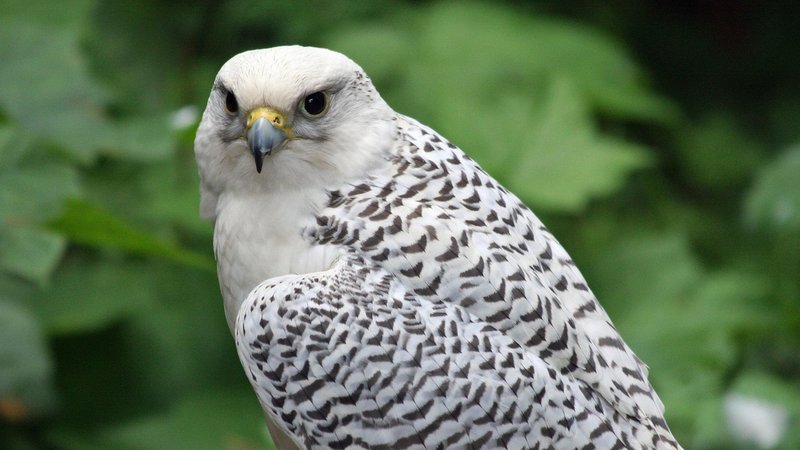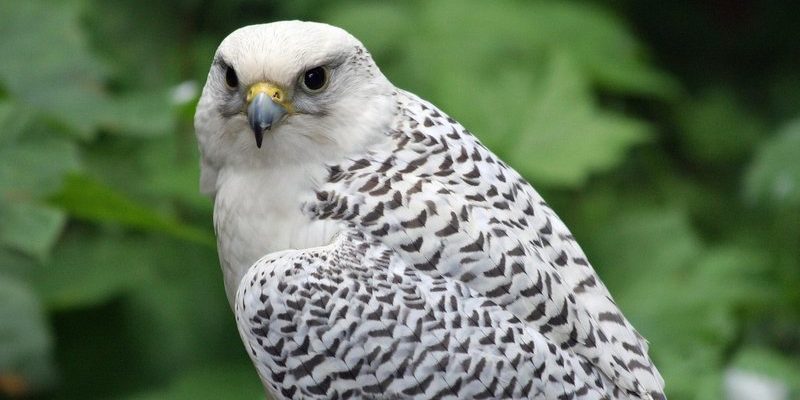
Picture this: you’re in a snowy wilderness, and all around you, there’s a web of life—the graceful movements of animals, the rustle of vegetation, and the intricate relationships between species. The gyrfalcon, as the largest falcon in the world, stands at the top of this web. It’s not just important for its beauty; it plays a vital role in controlling populations of prey and maintaining ecological stability. Let’s explore how this amazing bird influences its surroundings.
Understanding the Gyrfalcon’s Habitat
The gyrfalcon is primarily found in the Arctic and sub-Arctic regions, where the cold climate shapes its lifestyle. These areas are characterized by vast expanses of tundra, cliffs, and, sometimes, coastal areas. The gyrfalcon thrives in these rugged landscapes, where it can nest on steep cliffs and hunt in open spaces.
What makes this habitat crucial for the gyrfalcon? Firstly, the availability of diverse prey is essential. Its diet mainly consists of birds, but it can also take small mammals such as Arctic hares or lemmings when the bird population is low. This adaptability ensures that the gyrfalcon can find food in a range of conditions, making it a resilient apex predator.
Let’s not forget the climate. The harsh weather conditions are part of what shapes the gyrfalcon’s behavior. With their thick plumage and powerful bodies, these birds are built for survival in the cold. The dramatic shifts in their environment, from frigid winters to mild summers, play a significant role in their hunting patterns and nesting habits.
The Gyrfalcon as an Apex Predator
Being an apex predator means that the gyrfalcon sits at the top of its food chain. It doesn’t have many natural enemies, which allows it to exert control over the populations of its prey. This control is vital for maintaining balance in the ecosystem.
You might be wondering how this works. When gyrfalcons hunt, they selectively target the weaker or slower birds in their territory. This predation helps to keep prey populations healthy and prevents overpopulation, which can lead to resource depletion. When too many birds crowd an area, they compete for food and nesting sites, and the environment can suffer.
As the gyrfalcon keeps the bird population in check, it also has a ripple effect on the entire ecosystem. For instance, fewer small birds can mean more vegetation growth, as these birds often feed on seeds and insects. Thus, the gyrfalcon’s presence indirectly supports plant life, which in turn supports various other wildlife.
Impact on Biodiversity
Healthy ecosystems thrive on biodiversity, and the gyrfalcon plays an essential role in promoting it. With its unique hunting techniques and territorial behavior, the gyrfalcon influences the distribution of different bird species in its habitat.
Consider this: when gyrfalcons are present, they encourage other birds to adapt their behaviors. Some species may decide to nest in safer locations or develop different feeding habits. This change in dynamics helps maintain a diverse range of species within the ecosystem, which is crucial for resilience against environmental changes.
Moreover, the gyrfalcon can serve as an indicator species. When these birds are thriving, it often indicates that the ecosystem is healthy. Conversely, a decline in gyrfalcon numbers can signal potential problems, like habitat loss or changes in prey availability. Monitoring their populations can provide valuable insights into the overall health of the environment.
Connection to Human Activity
Humans often impact natural ecosystems, sometimes in unexpected ways. The gyrfalcon is no exception. As traditional hunting grounds are altered—through climate change, urbanization, or agriculture—the gyrfalcon faces new challenges. For example, habitat destruction can limit its nesting sites and access to prey.
However, humans can also play a positive role. Conservation efforts that protect the gyrfalcon’s habitat help ensure its survival. Organizations dedicated to preserving the Arctic environment often focus on maintaining the delicate balance of life that the gyrfalcon is a part of. By supporting these efforts, we’re not just saving a beautiful bird; we’re safeguarding entire ecosystems that rely on its presence.
Let me explain—a thriving gyrfalcon population could mean that other wildlife, including migratory birds and small mammals, is also thriving. The more we understand this relationship, the better equipped we are to make informed decisions about our environment.
The Gyrfalcon in Cultural Context
Historically, the gyrfalcon has held significant cultural importance in various societies, especially among Indigenous peoples of the Arctic. These birds are often seen as symbols of strength and freedom. Their remarkable hunting abilities have led to their hunting being practiced in falconry for centuries, showcasing the human fascination with their grace and skill.
In some cultures, the gyrfalcon embodies spiritual beliefs and values connected to nature. Its majestic flight and powerful presence inspire stories, art, and traditions that weave together the human experience and the natural world. By recognizing the cultural significance of the gyrfalcon, we can enhance our appreciation for the roles these birds play in both nature and human society.
Preserving the gyrfalcon also means preserving the stories, traditions, and connections people have to this remarkable bird. It’s a reminder of the fascinating interplay between culture and nature, and how important it is to cherish both.
Conservation Challenges and Efforts
Despite being a resilient species, the gyrfalcon faces numerous challenges that threaten its populations. Climate change is perhaps the most daunting issue, affecting not only its habitat but also its prey sources. As temperatures rise and weather patterns shift, the delicate balance that sustains the gyrfalcon in the Arctic is put at risk.
Habitat loss is another pressing concern. As human development expands, natural landscapes are disrupted, leading to fewer nesting sites and hunting grounds for the gyrfalcon. Conservation organizations are stepping up to tackle these issues, working to protect critical habitats and promote sustainable practices.
Moreover, raising awareness about the gyrfalcon’s role in its ecosystem can empower local communities and encourage conservation efforts. By understanding the value of this majestic bird and its impact on the environment, we can work together to forge a brighter future for both the gyrfalcon and the ecosystems it inhabits.
The Future of the Gyrfalcon
Looking ahead, the future of the gyrfalcon depends on our commitment to conservation and ecological balance. While the challenges are significant, there’s hope in the growing awareness of environmental issues and the importance of protecting biodiversity. Every small effort contributes to a larger change, whether it’s supporting conservation initiatives or advocating for policies that protect natural habitats.
With continued dedication, we can ensure that the gyrfalcon remains a vibrant part of its ecosystem. Its presence not only enriches our natural world but also reminds us of the intricate connections that bind all living beings. So, the next time you think about this magnificent bird, remember its vital role and the importance of preserving the delicate web of life it represents.
In conclusion, the gyrfalcon isn’t just a bird of prey; it’s a vital player in maintaining the equilibrium of its ecosystem. From its impact on prey populations to its role as an indicator of environmental health, the gyrfalcon is essential for the balance of life in the Arctic. Let’s celebrate and protect this incredible bird and all that it signifies for our planet’s future.

